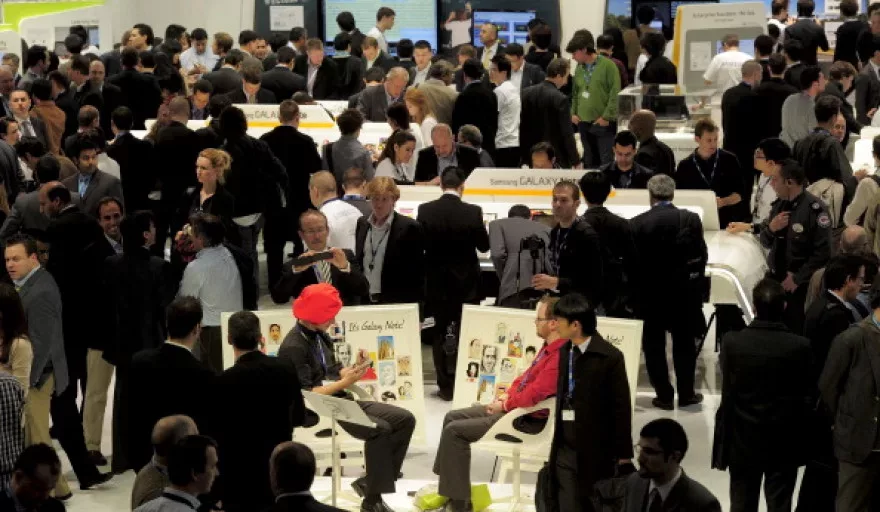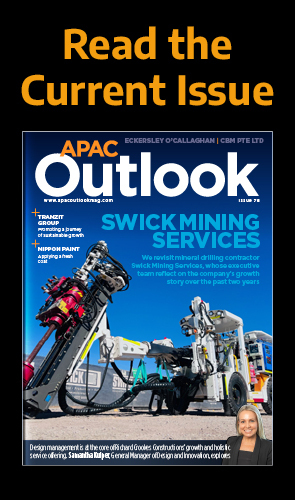APAC Outlook Magazine takes a deep dive into the Mobile World Congress, with highlights from the third day.
AIRTEL CEO WANTS SUB-$100 4G DEVICES
Gopal Vittal, CEO of Bharti Airtel – the largest operator in India – flagged up the high price of 4G devices as one of the main barriers to LTE rollout in India.
Speaking at Tuesday’s Global TD-LTE initiative (GTI) summit, he said that until prices drop below $100, LTE would not be significant. “We look at LTE and the opportunity, but it’s still some time away,” he said.
Airtel’s CEO pointed to other “infrastructure challenges” holding back 4G. “The spectrum we have – supplied to all operators – is about 40 per cent of the global average,” he said. “Making the situation worse is that eight to nine operators share it, leading to extremely fragmented spectrum holdings.”
Another big problem, said Vittal, is that only 5-10 per cent of base stations throughout India are hooked up to fibre.
Vittal added that while India has 900 million mobile customers, only 130 million have mobile internet access. And of that smaller number, there are only 67 million smartphones.
“The vast majority of mobile users are on 2G,” he said.
ALCATEL-LUCENT CEO PLEAS FOR MORE INVESTMENT IN EUROPE
Michel Combes, Alcatel-Lucent CEO, urged Europe’s operators to invest more in IT and network investment if the region is not to lag the rest of the world in service innovation.
“Europe is still embedded in a vicious cycle,” he said at Wednesday’s keynote on ‘The power of Big Data’. “There is not enough investment in networks and IT, meaning service providers are left to compete on price rather than innovation.”
The Alcatel-Lucent CEO pointed to what he saw as a thriving and “virtuous” digital eco-system in the US, the foundations of which were laid by investment in high-speed broadband access networks and cloud technologies. Asia is moving ahead, too, he observed.
With new and differentiated services enabled by IT and network investment – which tend to carry higher margins than commoditised services – Combes argued that operators can then use the higher profits to plough back more money into IT and networks.
The overall theme of Combes’ presentation was an industry at turning point. Rapid growth in data volumes – he pointed to recent study from Bell Labs, Alcatel-Lucent’s research arm, predicting a 440 per cent increase in metropolitan cloud and data centre traffic between 2012 and 2017 – meant operators need a radical re-think on network design.
“There needs to be structural change on the way we build our networks to deliver the scale and elasticity required,” he said.
Combes, who took the helm at the Franco-US supplier eight months ago, is looking to strengthen the firm through his ambitious ‘Shift’ plan – moving away from legacy systems to IP, cloud and “ultra-broadband” technologies. He doesn’t expect to work alone. “I urge the industry to work together, coming from both IT and network worlds,” he said.
Under Combe’s stewardship, Alcatel-Lucent recently entered into partnership with Qualcomm to push further on small cell innovation. During this week’s Congress, Alcatel-Lucent announced a partnership with US chip giant Intel to speed up virtualisation of network functions.
AT&T, VODAFONE MERGER COULD RESET SMARTPHONE POWER BALANCE
A desire to “push back” against technology giants like Apple and Google could fuel the interest of AT&T in buying Vodafone, according to Tim Boddy, an analyst with Goldman Sachs.
Speaking during a Tuesday-afternoon session at Congress, Boddy noted that smartphone purchasing by AT&T and Vodafone together equates to more than 20 per cent of the total revenue Apple generates from iPhone sales, which would give a combined entity “industry-leading scale benefits”.
“Vodafone is in the spotlight as an asset many would consider to be in play,” said Boddy. “It doesn’t have a controlling shareholder and is based in a country where M&A is permitted.”
AT&T ruled itself out of bidding for Vodafone in January, but some analysts believe it could mount a takeover attempt in the second half of the year as it looks to expand its international presence.
Although such empire-building has previously had disastrous consequences for shareholder value creation, Boddy thinks there is a stronger rationale for what he calls “out-of-market” transactions this year.
“The mobile industry faces an unprecedented concentrated ecosystem of suppliers, with Apple and Google obviously dominating in terms of operating systems and services,” he explained.
Goldman Sachs also expects to see more in-market M&A over the next two years – although regulation could clearly pose a barrier to such consolidation – as operators look to reduce their running costs and eliminate aggressive rivals like France’s Iliad.
“When you look at the disruption it has caused, taking enormous amounts of market share over the last two years, you can see why there might be interest in taking it out,” said Boddy.
Even so, he is less optimistic about the prospect of consolidation within the US, indicating this may have to wait until the “next administration”. Indeed, any likelihood that Sprint will acquire T-Mobile US seems to have receded, with Department of Justice officials unlikely to support a tie-up between the country’s third- and fourth-biggest players, according to recent reports.
Boddy also doubts operators will generate much value from M&A that takes them into adjacent industries. “It’s very hard to move the needle,” he said. “Telefonica and Vodafone have targets for new services that equate to low-single-digit percentages of total revenues and changing the dynamic is enormously challenging.”
TELEFONICA, LG, SAMSUNG, SONY INK WEARABLES ALLIANCE
Telefonica announced a plan to collaborate with LG, Samsung and Sony Mobile to integrate services, and therefore be compatible, with the smart wearables of the device makers.
In a statement, the operator group said it is “open to reach agreements with other market players, manufacturers, content providers, companies in the fashion industry… to ensure that these devices are commercially available”.
Telefonica also said it is “committed to convert smart wearables into a line of successful businesses in coming years, integrating some of their most successful services, such as Tu Go, to give customers added value and profits that make these devices an undoubted commercial success”.
Marieta Rivero, global marketing director of Telefonica, said: “Experts and analysts now point to these devices as a technology trend with the greatest market, and Telefonica wants to participate and lead the development, integration and support of services in the wearables.”
SOURCE: www.mobileworldlive.com



































